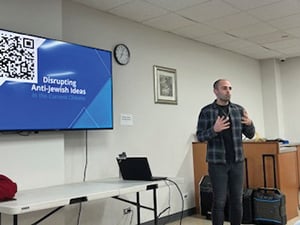I will never forget a billboard I saw early in my career, while riding the 167T New Jersey Transit bus into New York City. The message on the billboard merely stated that we spend more time planning vacations than planning for retirement. Understandably, most people find planning a vacation more exciting than planning for something like retirement, which could be decades into the future, but we owe it to ourselves to start planning earlier.
A financial plan, which is a process that involves gathering information and analyzing an individual’s current status compared to their financial goals, while developing a plan to help reach those goals, may help to answer common questions such as “Am I on track to be able to retire; what will my retirement lifestyle look like, and can I realistically leave a legacy to my children and grandchildren?”
The process of financial planning involves sitting down with a financial planner and sharing information like family/ health circumstances and concerns along with an individual’s financial goals. There is a conversation on envisioning retirement in the categories of needs such as paying for utilities, food and a place to live; wants like taking two to three vacations a year; and wishes like contributing to 529 plans for grandchildren and the anticipated time frame. The process also includes a review of financial data like income, expenses and current financial resources such as savings and investment accounts. Discussions around insurance coverage and estate planning are covered as well. A risk questionnaire is also included to assess how the client feels about potential market fluctuations. An analysis is then performed using the information collected to determine the client’s current status. Depending on what the analysis shows, recommendations are made to help the client maximize their potential for reaching the goals shared. The plan is shared and reviewed with the client and once there is agreement of changes to be made to a client’s current financial picture, decisions are made on who is responsible for what and the appropriate time frame for changes. The final step is ongoing monitoring, which is designed to last several years, where the plan is revisited and updated when there are changes to a client’s financial picture or goals.
By engaging early, we can:
Get a better sense of whether we are saving enough and working on incremental changes to improve on that before it’s too late.
Better assess our risk tolerance and determine whether our investments are aligned and get the appropriate levels of investment returns given the amount of risk we are comfortable taking.
Evaluate our “asset location” to determine if we have the right mix of “tax now” (e.g., bank accounts and taxable brokerage accounts),“tax later” (e.g., 401ks, IRAs) and potentially “tax never” (e.g., Roth IRAs and 529s) accounts.
Start thinking about how we are going to “recreate a paycheck” once we’re no longer working. How will we turn savings into income? What accounts will we draw from? What investments will we use?
While it’s never too early to start, as I have worked with professionals who are as young as late 20s in drafting an initial financial plan; anyone who is planning to retire in the next five to 10 years should absolutely be engaged in financial planning. If your current plan is not successful, now is the time to be saving more, spending less, planning to work longer, adjusting your investments, or a combination of these areas. A professional can assist you in assessing where you stand and clearly defining what changes would put you on a path towards financial success.
I have also met with individuals who are too afraid to retire as they don’t believe that they can afford to do so. Using the appropriate tools and devising an appropriate income stream, it is sometimes the case that one can very comfortably retire given their assets and lifestyle.
Not all financial institutions offer financial planning, but they probably should. Do yourself and your loved ones a favor by engaging in financial planning if you haven’t done so yet. And if you have created a plan but it’s been years since it was re-evaluated, it may be time to revisit your plan and make sure it’s on track and in optimal shape.
This material is for informational or educational purposes only and does not constitute fiduciary investment advice under ERISA, a securities recommendation under all securities laws, or an insurance product recommendation under state insurance laws or regulations. This material does not take into account any specific objectives or circumstances of any particular investor or suggest any specific course of action. Investment decisions should be made based on the investor’s own objectives and circumstances.
Advisory services are provided by Advice & Planning Services, a division of TIAA-CREF Individual & Institutional Services, LLC, a registered investment adviser. The TIAA group of companies does not provide legal or tax advice. Please consult your legal or tax advisor. Check the background of your financial professional on FINRA’s BrokerCheck.
By Lauren Aliza Ellberger













